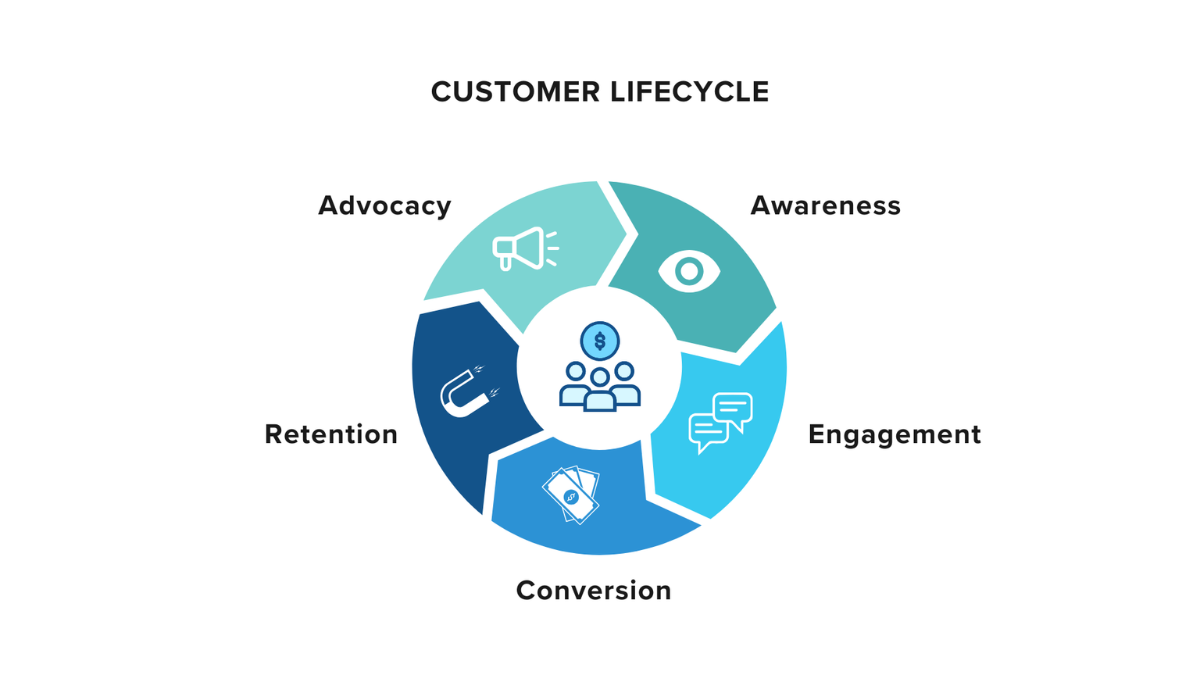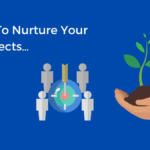Introduction
The customer lifecycle is the journey a customer takes with your business—from first becoming aware of your offerings to long-term loyalty and advocacy. Managing this lifecycle effectively is critical for sustained business success, higher customer satisfaction, and improved profitability. A strategic approach to each stage of the customer journey ensures not only customer acquisition but also retention and growth.
This article explores how to manage each phase of the customer lifecycle, outlining best practices, common challenges, and actionable tactics to build strong, lasting relationships with customers.
1. Understanding the Customer Lifecycle
The customer lifecycle typically consists of five key stages:
- Awareness – The customer learns about your product or service.
- Consideration – They evaluate your solution among alternatives.
- Purchase – The customer decides to buy from you.
- Retention – Post-purchase support and engagement to encourage repeat business.
- Loyalty/Advocacy – Long-term customers who recommend your business to others.
Managing the lifecycle involves optimizing each of these stages to move customers forward in their journey with your brand.
2. Stage 1: Awareness
At this stage, potential customers are identifying a need or problem and looking for solutions. Your goal is to grab their attention and introduce your value proposition.
Key Tactics:
- Use content marketing (blogs, videos, infographics) to inform and educate.
- Leverage social media platforms to increase visibility.
- Participate in events, webinars, and industry conversations.
- Optimize your presence across search engines to be found easily.
The focus here is to build trust and position your business as a helpful, reliable resource.
3. Stage 2: Consideration
In this phase, the customer is actively comparing different options. You must present your offering as the most suitable solution for their needs.
Key Tactics:
- Provide case studies, testimonials, or user reviews to build credibility.
- Offer detailed product information and demos.
- Engage with personalized messaging through email or live chat.
- Highlight unique value differentiators and clear benefits.
Quick response times and targeted communication play a big role in influencing decisions during this phase.
4. Stage 3: Purchase
This is the point where the customer makes the buying decision. The experience at this stage can set the tone for the rest of the relationship.
Key Tactics:
- Make the purchase process smooth, simple, and secure.
- Offer flexible payment options or first-time buyer incentives.
- Communicate order confirmations, next steps, and delivery expectations clearly.
- Provide onboarding materials or walkthroughs to ensure a great start.
A well-handled purchase stage increases customer satisfaction and reduces buyer’s remorse.
5. Stage 4: Retention
After the purchase, the goal shifts to keeping the customer engaged and satisfied so they return in the future. Retention is often more cost-effective than acquisition and builds a stable revenue base.
Key Tactics:
- Provide timely support and proactive customer service.
- Follow up to gather feedback and improve the experience.
- Use loyalty rewards, discounts, or exclusive access for repeat buyers.
- Maintain consistent and valuable communication through newsletters or updates.
The focus is on relationship-building rather than selling.
6. Stage 5: Loyalty and Advocacy
Loyal customers are not only frequent buyers—they also become advocates for your brand. Their word-of-mouth recommendations can be powerful drivers of new business.
Key Tactics:
- Encourage and reward referrals or reviews.
- Invite loyal customers into special programs or early access groups.
- Showcase customer success stories in your marketing.
- Continue to deliver consistent value and appreciation.
Happy customers are the most effective and affordable marketing channel any business can have.
7. Tools and Processes to Support Lifecycle Management
Effective lifecycle management requires coordination across marketing, sales, customer support, and operations.
Recommended Practices:
- Maintain a centralized customer database for tracking interactions.
- Automate workflows such as follow-ups, renewals, or satisfaction surveys.
- Use segmentation to personalize messaging at different lifecycle stages.
- Monitor lifecycle metrics such as churn rate, customer lifetime value (CLV), and Net Promoter Score (NPS).
Proper infrastructure ensures no stage of the journey is neglected.
8. Common Challenges and How to Overcome Them
a. Lack of Insight:
Without proper data, it’s hard to know where a customer stands in the journey.
Solution: Implement systems to capture customer behaviors, preferences, and feedback.
b. Inconsistent Communication:
Disjointed messaging between teams leads to customer frustration.
Solution: Ensure alignment through shared goals and unified communication tools.
c. High Churn Rates:
Losing customers too early in the cycle hurts growth.
Solution: Invest in retention efforts, listen to feedback, and continuously improve service.
9. Measuring Lifecycle Success
To know whether your lifecycle strategy is working, track the following:
- Customer Acquisition Cost (CAC)
- Customer Retention Rate
- Customer Lifetime Value (CLV)
- Churn Rate
- Conversion Rates between stages
Analyzing these metrics regularly allows you to refine your approach and stay aligned with customer needs.
Conclusion
Managing the entire customer lifecycle effectively is a strategic imperative for any modern business. By understanding each stage—awareness, consideration, purchase, retention, and loyalty—and optimizing processes and communication for each, you create meaningful, long-lasting relationships.
Successful lifecycle management is not about pushing for a sale at every step; it’s about understanding the customer, providing value consistently, and building trust. When done right, it drives sustained growth, improves customer satisfaction, and creates a competitive advantage that’s hard to beat.
Frequently Asked Questions (FAQs)
Q1: Why is customer lifecycle management important?
A: It helps businesses build strong relationships, reduce churn, increase lifetime value, and drive long-term revenue growth by delivering the right message at the right time.
Q2: What is the most crucial stage of the customer lifecycle?
A: Each stage is important, but retention is often the most valuable because it’s easier and more cost-effective to keep existing customers than to acquire new ones.
Q3: How do I know which stage a customer is in?
A: Use behavioral data such as website visits, email engagement, purchase history, and support interactions to identify where a customer is in their journey.
Q4: Can small businesses manage the customer lifecycle effectively?
A: Yes, with the right tools and a clear strategy, businesses of any size can successfully manage and optimize the customer lifecycle.
Q5: What’s the difference between customer lifecycle and customer journey?
A: The customer journey refers to the steps a customer takes when interacting with your brand, while the customer lifecycle is a broader framework that includes long-term engagement, retention, and loyalty.



